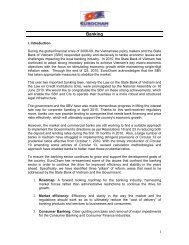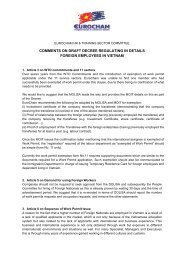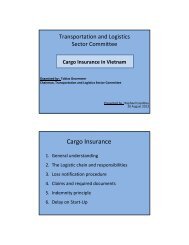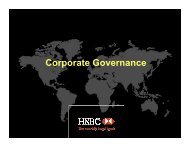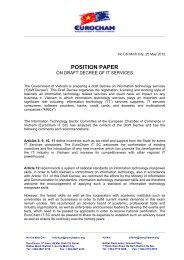ASEAN MUTUAL RECOGNITION ARRANGEMENT ON TOURISM ...
ASEAN MUTUAL RECOGNITION ARRANGEMENT ON TOURISM ...
ASEAN MUTUAL RECOGNITION ARRANGEMENT ON TOURISM ...
Create successful ePaper yourself
Turn your PDF publications into a flip-book with our unique Google optimized e-Paper software.
satisfaction of tourists visiting the region. One of the ways to achieve this goal is throughmutual recognition of qualifications of tourism professionals across Member States.The purpose of this mutual recognition mechanism is to facilitate mobility of tourismprofessionals within <strong>ASEAN</strong> based on competence-based tourismqualifications/certificates, and at the same time, improve the quality of servicesdelivered by tourism professionals. There are 32 job titles covered under this MRA,ranging from housekeeping, front office, food and beverages services, and foodproduction for hotel division, to travel agencies and tour operator for travel division.1.3 The <strong>ASEAN</strong> MRA – TP HandbookThis Handbook will explain the MRA – TP system and processes so that <strong>ASEAN</strong> NTOs arefully aware of this important Arrangement and can take action to implement MRA – TP by2015 as agreed by the <strong>ASEAN</strong> Member States. In addition, an MRA Guidebook for TourismProfessionals & Employers will be prepared to give a short and practical guide forindustry members.1.4 What is a Mutual Recognition Arrangement?A mutual recognition arrangement (MRA) is an international agreement designed topromote economic integration and increased trade between nations. This is achieved byreducing regulatory impediments to the movement of goods and services.MRAs facilitate trade because they smooth the path in negotiation between nations. Eachnation has its own standards, procedures and regulations. If trade is to flow freelybetween nations then agreement has to be reached on the equivalence – or conformity -between these regulations, standards and procedures. MRAs are the instruments that areused to reach such agreement.MRAs became important in the field of assessing equivalent standards between partnersin the early 1980s. They were formalised by the World Trade Organization under theAgreement on Technical Barriers to Trade (TBT). This agreement has become the guidingbasis for all MRAs whether in the public sector (where the majority are found) or in theprivate sector.1.4.1 Types of MRAsWhilst there are a number of types of MRAs, the most common is designed to facilitateagreement on standards. This type of MRA is an agreement between two or more partiesto mutually recognise or accept so one or all aspects of one another’s conformityassessments. The term is also now applied to agreements on the recognition ofprofessional qualifications.P a g e | 5





